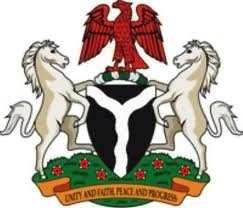
Nigeria has failed to meet the objectives of the water and sanitation policy after 17 years, the Federal Government FG on Thursday said.
It also said that access to piped water on the premises in urban areas has declined from 32 per cent in 1990 to 7 per cent in 2015.
The Minister of Water Resources, Engr. Suleiman Adamu stated this at the National Retreat on Revitalising Urban Water Supply and Sanitation in Abuja.
He said although the FG had adopted several strategies in the past to implement the policy, none have yielded the desired results.
However, he stated that the Nigeria Wash Diagnostic Report which was formally launched by the Vice President, Prof Yemi Osibanjo, at the retreat, would help address the situation.
He explained that;”Nigeria’s water sector faces significant challenges with 61 per cent of Nigerians having access to improved water, but only 31 per cent has access to improved access on premises. In the case of sanitation, only 29 per cent of Nigerians have access to improved sanitation.”
Adamu, therefore, stressed the need for a serious review of the policy with a view to fashioning out a better model that will enhance more collaborative efforts of all the three tiers of government as well as promote private sector participation and access to other sources of funding the urban water supply and sanitation.
The minister further stated that the gathering at the retreat was to brainstorm on possible ways to improve urban water supply and sanitation.
“In view of the huge investment required by the sector, we need to look for innovative ways of funding the urban water supply and sanitation in the country.
“For us to make significant progress in urban water supply and sanitation, the system must be run as a business. Consequently, to effectively reform and revitalise the urban water supply and sanitation, the states need to develop business plans for the sector to meet the demand and needs of the 21st century.”
The National Economic Council and the Federal Executive Council had approved the National Water Supply and Sanitation Policy in 2000.
The policy among others spelt out the cost sharing arrangement for agreed capital investment in the provision of water supply for urban water supply; federal government 30 per cent, state government 60 per cent, and local government 10 percent while the cost of maintenance is 100 per cent by the state government through appropriate tariff.
END

Be the first to comment